Golden Rhoze, Solidago is all the names of the golden. This perennial is hotly loved by gardeners of different countries. Magnificent bright yellow flowers decorate the plot, instantly caught a look. Despite the high decorativeness of the golden garden in some regions is considered weed. In this article, we learn how to plant this is a perennial plant in your area so that it does not prevent other cultures.
Golden Plant - Description
- Golden - Rhizome Perennial Plant belonging to the Astrov family.
- The golden pan is very common in natural nature. It can be found in Western Europe, in Central Russia, Asia, Siberia, America. Prefers to grow in open areas, in the meadows, forest edges, fields.
- The second common name of the golden - Solidago, that translated from Latin denotes "strong, healthy". This plant can still be called Golden Rogoza, Zander, Voronets, Ware Pretch, Golden Canadian, Honey, Wild Chicarium, Black Grass.
- There are more than 120 types of golden. Plants differ in the form of inflorescences, height, type of root system, etc. About 20 types of golden land and successfully used in landscape design.
- Golden can reach a height from 30 cm to 200 cm depending on the type and variety.
- The stem of the golden plant is a reprehensive, some varieties can be fluttered.
- Rhizome, though short, but very powerful, waslated.
- Golden shoots are usually not prone to branch, but some varieties of plants can have shoots branching on the top. Shoots also have a smooth surface with a weak downlook. Sometimes stems can acquire a reddish tint.
- Golden leaves have an elongated egg-shaped shape with a pointed top. The edge of the sheet has a slightly wavy shape or smooth. On the stem leaves are arranged. As a rule, the lower leaves have long stuffs, and the leaves located above have shorter pets. In some varieties of golden, the lower leaves may have short stiffs, and the upper appearance is sedentary.
- The flowering period of the golden barn is long - from the beginning of summer and until autumn.
- Golden flowers can be painted in yellow, pale yellow, rich gold color. Flowers small - 10-15 mm long.
- The variety of types of inflorescences is the feature of the golden bar, which highlights it among other similar perennials. Small flowers are gathering in baskets, and those in turn - in blurred, creeps, umbrellas, cooled, globular inflorescences.
- Golden fruit is a ribbed pubescent seed, which matures after the end of the perennial flowering.
Interesting facts about golden
- Golden Grass is highly appreciated by folk gear, healers, homeopaths. It is rich in vitamins, organic elements, greasy acids. The value of therapeutic properties of this perennial is recognized even official medicine. The golden gylet is part of the drugs intended for blood purification, activating metabolic processes.
- Golden - an excellent fronge plant and perico. Huting these plants in its plot, be prepared for the fact that all the bees from the nearest apiary will fly to visit you.
- The golden bar is also used for the manufacture of coloring styled and brown.
- If you decide to plant a golden garden on your site, you should know that the eating of this plant is pets in large quantities is very dangerous. Golden poisonous. There were examples when sheep after eating this grass received strongest poisoning, paralysis, fatal outcome. Golden can also be dangerous for people who are prone to allergic reactions.
- Golden - a perennial, which despite his decorativeness, has a negative glory. In some countries, the plant led to environmental issues. The fact is that the solidago is a very lively plant that can quickly spread independently. The Golden Canadian, for example, has a smaller root system, which gradually displaces neighboring cultures. But modern flower products can choose for landing on their sites other types of golden, which are not aggressive.
- On the shelves of the pharmacy, the golden rod can be found called the Grass Golden Rogoz. It has a sweet smell and a specific taste.
Golden. Photo
Golden - Views
Golden ordinary
- Golden ordinary is often called golden ridge. Due to the fact that this species is most common in Western Europe, it can still be called European.
- In natural nature, it prefers to grow on forest edges, glades, dry meadows.
- The height of the oscillation can vary from 60 cm to 120 cm.
- Golden ordinary has a powerful rhizome.
- Skes of the golden of ordinary straight, prone to a small branch only on the top.
- The leaves of the golden of the ordinary on the bottom of the stem are growing on small stiffs, and at the top - without stuff. Have an elongated egg shape.
- Small yellow flowers are collected in small baskets reaching in diameter 1.5 cm. Baskets are collected in spherical or slightly elongated inflorescences.
- The period of active flowering of the goldencorn of the ordinary lasts from June to August. This species is often used in landscape design.
- Also known several subspecies of the Osky Golden: Golden Priellic, Golden Daurus, Golden Small, Golden Miscellaneous and Others.
Golden Canadian
- This type of golden was received by the place of its grieving in the wild. Motherland consider the eastern regions of North America. Then the species was brought to Europe, Asia, where he received negative fame. The view is incredibly life-in-law. Gyotnik Canadian is the first plant that appears on fires and after natural disasters. This plant was recognized as an aggressive weed in China and Japan, where it became a threat to orange plantations and rice fields.
- Golden Canadian has the form of a classic golden. Can reach 150 cm in height. Stems of golden straight, slightly branched at the top.
- Canadian golden leaves abundantly cover shoots, especially their tops. The upper part of the sheet has a smooth surface, and the bottom is sowing. The leaves have a slightly jagged edge and can reach 15 cm long.
- The small flowers of the Gyndernik canadian painted in a rich yellow color. They are collected in baskets up to 4 mm in diameter. Baskets are combined into rather large buggy inflorescences, which in length can reach 20 cm.
Golden Blue Gray
- Golden Blue-gray - incredibly decorative species of golden, whose birthplace is North America.
- The stalks of the golden-gray golden can reach 120 cm long. They are not inclined to branch, spread and thin. Stems can be painted both in green and brown.
- Golden Blue-Gray is favorably different from his "fellow" with its appearance. It's all about foliage. The golden leaves are painted in a gray color, dark green or emerald. They grow on shoots without stuff, have a slightly saw edge and remind leaves willow.
- The yellow flowers of this type of golden are assembled in openwork inflorescences, which looks incredibly effectively combined with emerald foliage.
- Gyndernik bluish-gray blooms in the fall and is not afraid of even the first frosts.
Golden two-color
- The birthplace of two-bedding golden is the eastern and northern regions of the United States and Canada.
- Two-color golden is very different from other varieties of this perennial. Flowers plants are not yellow, but creamy-white. Also, the flowers are dismissed not at the ends of the shoots, like other species of the golden bar, but in the sinuses of the leaves.
- Green stems with a gray-shade of a two-color golden can reach 120 cm in height. They are distinguished by small rigidity and droppings along the entire length.
- Two-color golden leaves have an elliptical shape, a pilland. They can reach lengths up to 15 cm. At the base of the stems, the leaves are large, and at the top of the perennial - smaller.
Golden Cutlera
- Gyotrnik Kutler - the founder's plant in the removal of the lowest varieties of the golden. Its stalks reach only 10-25 cm in height, it is rare to meet instances with a height of 35 cm.
- Mountain areas of the Cutler's Gyotarnik consider mountainous areas in the northeast of the United States.
- Cutler's golden leaves have a rough surface, a saw blade, reach 15 cm long.
- Cutler's golden flowers are also painted in a rich yellow color. They are collected in busy and thyroid inflorescences. Flowering a perennial begins in the fall and continues until the occurrence of winter.
Golden Short
- Golden Shorta is not too often able to meet in areas of amateurs gardeners. In the wild, the plant is found in some regions of North America. Due to the activity of a person, the danger of disappearance began to threaten. Now Golden Short is under the protection of environmentalists.
- Golden Shorta is not distinguished by outstanding sizes. Stems can reach 90 cm in height.
- The period of active flowering for the golden Schorta starts in September. Flowers are collected in openwork inflorescences and painted in bright yellow color.
Golden Highest
- The kind got its name due to the impressive size, which the plant can reach. In nature, you can meet specimens of the golden of the highest, reaching 2 meters in height.
- The Motherland of the Highest Golden is considered to be some regions of the United States, Canada and Mexico.
- The golden stems of the highest have a slight input, they are not prone to branch.
- The golden leaves of the highest are located on the stems of the skewers, have a lancing shape and slightly jagged edge.
- Like most North American types of golden, the golden of the highest blooms at the end of summer. Flowers are small, painted in yellow lemon color. Flower baskets form rather large buggy inflorescences that can reach 35 cm long. Blossom lasts about 1.5 months.
- The golden golden is sometimes considered as a subspecies of the Gyndernik Canadian.
Gyotnik Daursky
- In the natural nature, Zhildren Daursky meets on rocky slopes, dry meadows, fields. The homeland is considered to be Siberia.
- Stems of the Zhotarnik Daurus are prone to branching only in the top. Plants reach a height of 1 m.
- The leaves at the base of the stems have long stiffs, and the leaves on the top of the stem are shorter stiffs.
- Golden Golden Daurry Small yellow flowers, which are going to narrow-line inflorescences.
Golden - Sorta
All the grades of the golden can be divided into 3 groups depending on the start of the flowering period:
- grade early flowering (in mid-June);
- varieties with an average flowering period (in the second half of July);
- middle flowering varieties (second half of August-September).
It is also possible to distinguish the conditional groups of gold stripes in height:
- low grade golden grade (up to 60 cm);
- the average grade of the golden (from 60 to 120 cm);
- tall grade golden (from 120 to 200 cm).
The following decorative varieties of the golden range are most popular among the gardeners:
- "GDCHANGL". This variety attracts the attention of many gardeners not only by its decorative qualities, but also a pleasant aroma who surrounds himself a bush. The grade is known for its resistance to diseases, in particular, to mildew. The perennial of GDCHANGL grows by a shrub in the form of a rhombus. Shoots are thin but strong enough. The leaves of this golden garden is two-color - the bottom side is painted in a grayish tint, and the upper one is in green. This grade belongs to the grades of the golden of the middle of the flowering. Yellow baskets appear on shoots at the end of July. The golden garrite is used by gardeners both to decorate its plot and for cutting bright bouquets, which long retain aesthetic appearance.
- "Dzintra". This variety was brought by a breeder from Latvia in about 1960. He found the greatest popularity among gardeners in the Baltic countries and Belarus. This perennial grows a very compact bush to 60 cm in height and resembles a column form. The bloom is very bright and intense. You can admire the yellow inflorescences of umbrellas for 30-45 days.
- Pillar. This grade of the golden plant refers to the average grades, as it does not exceed 90 cm in height. He also belongs to the Golden Group with late blossoms. Elegant yellow sweatshops begin to appear on colon-shaped bushes at the end of the summer or early autumn. Blossom continues for more than a month.
- "Perko". This golden grade is intensively used in landscape design since 1945. "Perko" - early grade, the plant blooms at the beginning of summer and pleases with flowers for 30-45 days. This type of golden attracts the attention of many gardeners with its amazing compactness. The maximum height of the bush is 60 cm.
- gyotrnik "Josephine". This variety refers to a group of golden varieties with average blossoms. Large yellow inflorescences appear at the end of July. The plant is actively used for the design of the living ingredients on the site, suitable for soliter and group landings, used to create winter bouquets. A distinctive feature is the pomp and the density of the bush.
Golden - landing
Choose a place to land the golden
Golden - a universal perennial who is suitable for growing almost on any plot. This plant will not hurt either the overabundance of light, nor the oversupply of the shadow. It can adapt to any conditions. Do not forget that in some countries the golden is considered aggressive weed grass. When choosing a place to land this plant, consider first of all the fact that the golden crop can exhibit neighboring cultures. But this will not happen if you choose not too aggressive varieties (like, for example, the Gyndernik Canadian). Also, nothing terrible with your landings will not happen if you will limit the Golden Summer.
Choose the ground for landing the golden
Turning to the question of the choice of the soil for landing the golden, you can also sigh with relief. Especially it will make novice gardeners, which are not too well versed in the characteristics and features of the soil in their plot. Almost all allegations of zolotarnik are unpretentious to the soil. They equally successfully can grow both in heavy clay soils and on light sandy soils.
Give landing technology by different methods
In the conditions of natural nature, the golden market is actively multiplied by seeds and shoots. If you want to plant a golden garden on your site, then it can be done by the seed method, the division of the bush and the modeling method. Consider some of the features of each of these methods:
- landing the golden seed method. This method is used very rarely, as the planting material very quickly loses its germination. If you still decided to grow solidago in this way, then choose either November or the middle of the spring. Before boarding the golden seeds, the seeds should hold some time in a wet cloth. After a few hours, just transfer the seeds to the diverse area. Some gardeners do not even bother with the gluing of the golden seeds, as it will germinate anyway. You can bump seeds to the maximum depth of 3-4 mm. If you planted the seeds in the spring, the first shoots will appear after 14-21 days, and when landing under the winter - next spring. After the seedlings are fixed slightly, they should be seeded. Burgundy varieties of the golden squirrel searched at a minimum distance from each other in 40 cm, and tall - 80 cm;
- landing the golden drawing method. This method as well as the previous one provides 100% survival rate of the golden bar. Bringing the billet for cuttings should be started to appear buds. Choose well-formed shoots. It is necessary to separate them with the "heel". As a cutlets, the top of the escape can perform. If we trigger the perennial during the flowering period, then young shoots will begin to grow from the sinuses of the leaves, which can also act as landing material. The cuttings are simply plugged in the open soil, after which they are successfully rooted;
- landing the golden machine to divide the bush. To split the bush, it should be quite adult and strong. Usually, 4-5-year-old golden women become such. More adult bushes can hardly succumb to digging, as their root system becomes too big. Before digging, moisten the soil, carefully dig a bush and divide it into as many parts, as much as its root system allows. Plant every part of the bush in a pre-digging board pit. This method of reproduction of the goldenman is good and the fact that the plant is thus updated.
Golden - care
Golden in care is very simple and unpretentious. Consider some recommendations for creating the most comfortable conditions for solidago growth on your site:
- watering. The plant does not require regular irrigation. This is the vast advantage of this decorative perennial. If you forget about watering the golden market for all summer, then nothing terrible will happen. He is quite enough moisture from natural precipitation;
- feeding Golden grows perfectly and without fertilizer. But, if the soil is too poor on your site, then in the spring and autumn, any complex fertilizers can be made to enhance the decorative qualities of perennial. If you bring ash, it will become excellent prophylaxis from infection with mildewing;
- trimming. The golden garden needs pruning not so much for the formation of a beautiful form, how much to prevent samoshev. Once inflorescences fade, they should be trimmed. It is also worth noting that the varietal golden women are not inclined to aggressive self-sowing;
- wintering. Preparing golden plants to the winter period there is no need. They do not require any shelter. All you can do for a plant is to trim it up to a height of 20 cm from the ground level.
Golden. Video
Golden in landscape design
Thanks to sunshine appearance, the golden love is very like to use for the creation of juicy flower arrangements. The perennial will throw a look at her single landing. If you decide to create a group composition, then the despite all the yellow sowing inflorescences will look with the following decorative plants:
- spirea,
- juniper,
- iva hybrid,
- swimsuit
- cUBUSHIK,
- buzlock and others.
Difficulties in the cultivation of the golden
As you already understood, the golden plant in landing and care is unpretentious. Can gardeners experience any problems with growing this perennial plant? Is the plant resistant to disease and pests? Consider some examples:
- puffy dew can hit the golden flower in the event that summer was too dry and hot. It can also occur due to late removal of weak shoots, bush thickening. Also, the disease can hit the plant if you are overdoing with nitrogen feeders;
- the golden garden may seem like a liquecane for butterflies larvae, for field mice, caterpillars. But the number of these pests is usually so small that they can be collected manually with ease.
An herbal plant is a golden plant can be successfully grown on household plots in almost any climate and on any soil. You will definitely love this plant for its vitality, unpretentiousness to the conditions of growth, resistance to diseases and pests. Successes in landing golden and cultivation!

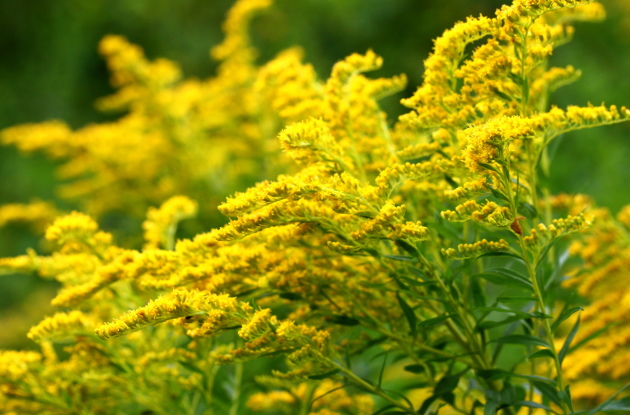
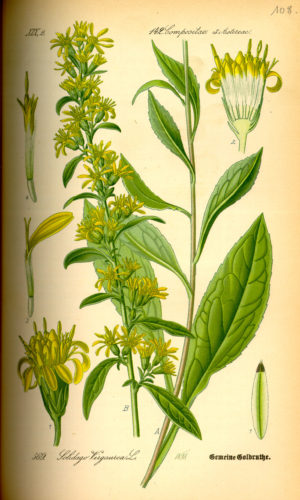
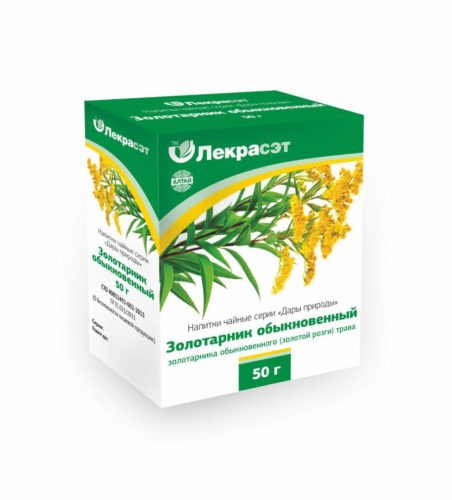
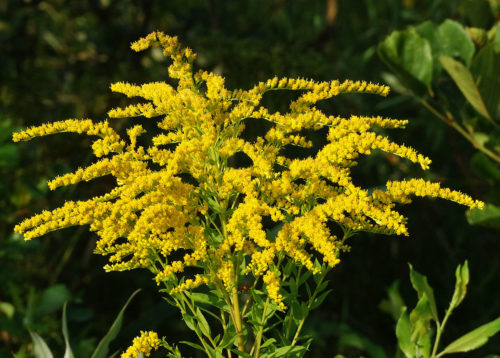
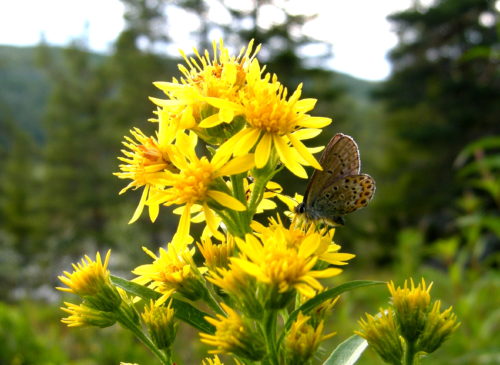

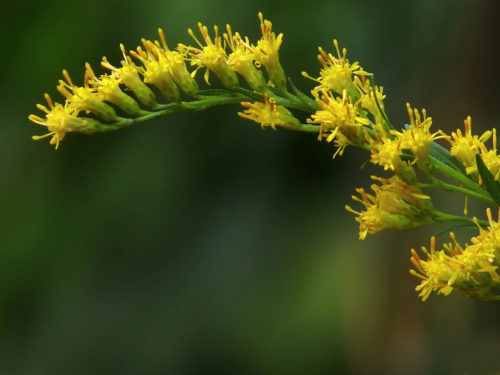
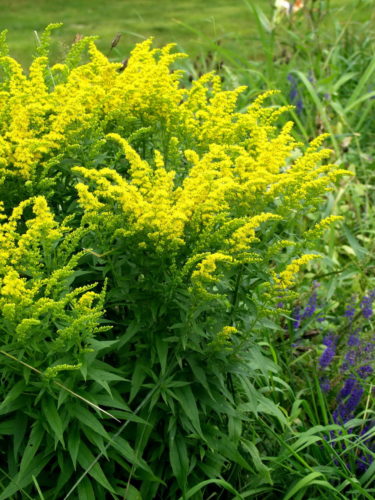

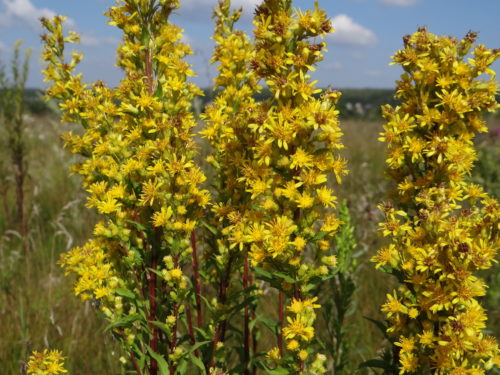
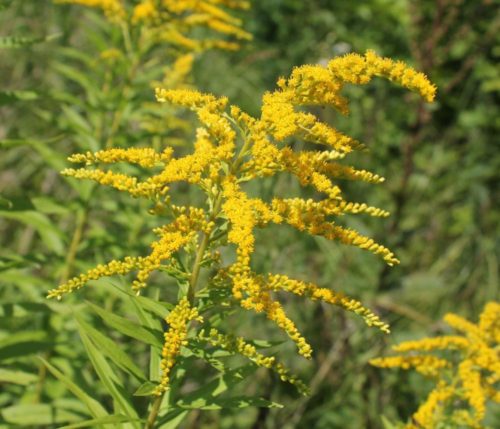

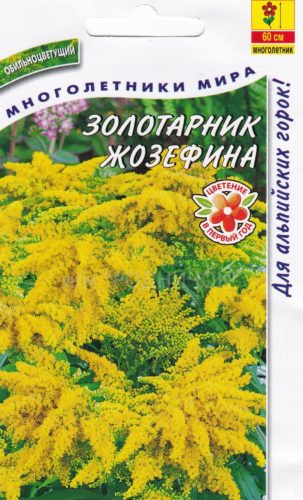
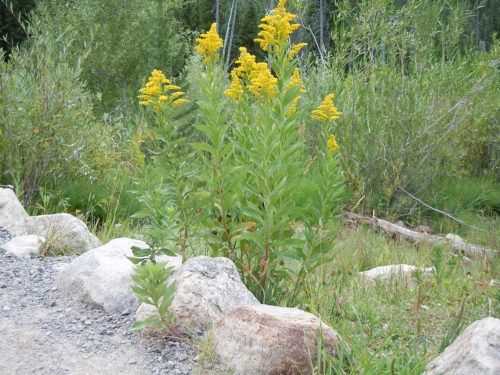

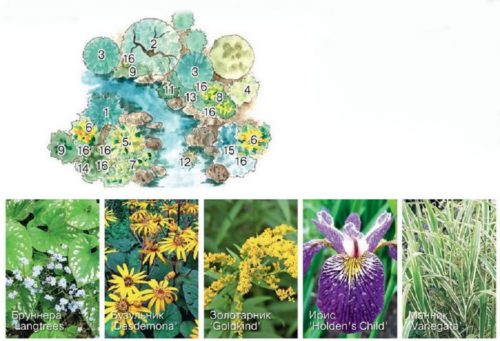
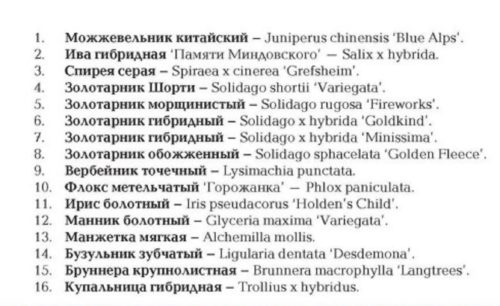












 Start a discussion ...
Start a discussion ...